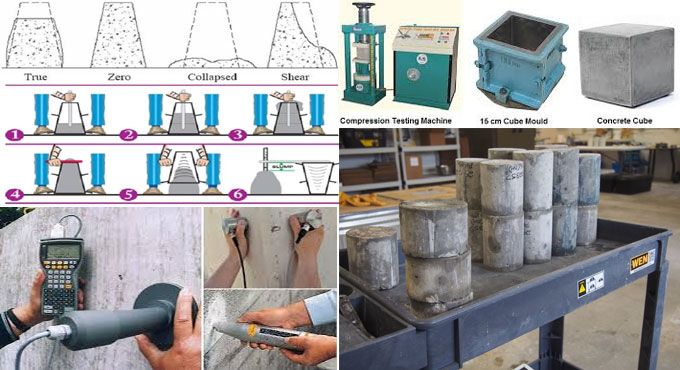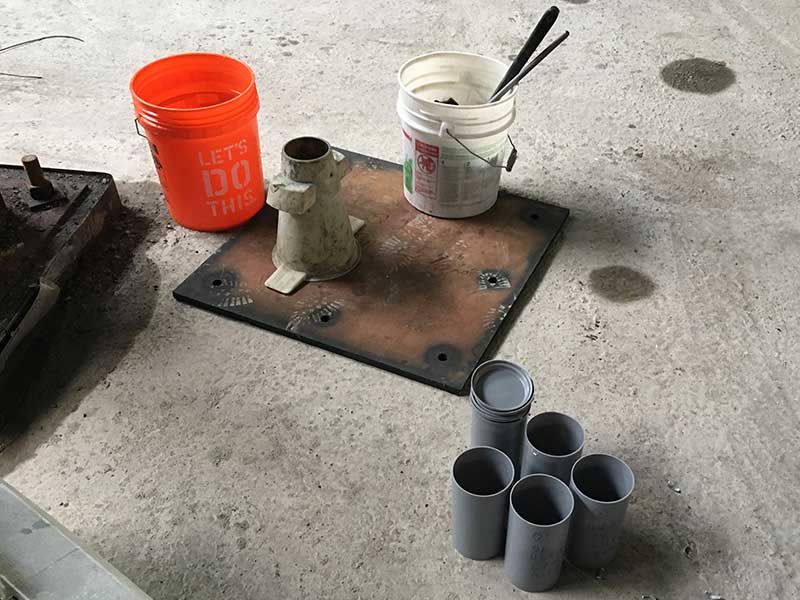Your Neighborhood Source for Concrete Testing Near Me: Elevating Task Durability
Your Neighborhood Source for Concrete Testing Near Me: Elevating Task Durability
Blog Article
Beyond the Surface area: Developments in Concrete Testing Techniques
Guaranteeing the top quality and reliability of concrete structures needs extensive screening and analysis. From sophisticated imaging technologies and non-destructive screening approaches to modern sensors and monitoring systems, the area of concrete testing has actually observed impressive progress. In this conversation, we will explore these advanced developments that are forming the future of concrete testing, revealing the interesting possibilities they provide for boosting building methods and guaranteeing the long life of our built setting.
Advanced Imaging Technologies

Another sophisticated imaging modern technology utilized in concrete screening is ground-penetrating radar (GPR) GPR uses electro-magnetic waves to spot and map subsurface functions, such as rebar, spaces, and delaminations. By giving real-time data on the problem of the concrete, GPR assists in recognizing possible weak points or issues that might endanger its architectural honesty.
In addition, progressed imaging innovations have actually reinvented the area of concrete petrography. Microscopes outfitted with digital imaging capacities permit in-depth analysis of concrete examples at the microstructural degree. This allows the identification of different components, such as cement paste, aggregates, and additional products, along with the discovery of negative reactions or deterioration devices.
Non-Destructive Examining Methods
Structure upon the developments in imaging technologies, the next location of emphasis in concrete screening involves the utilization of non-destructive screening approaches. These approaches provide useful understandings into the structural integrity and efficiency of concrete without creating any kind of damage to the product.
Another non-destructive screening method is the impact-echo test. This method entails striking the surface area of the concrete with a hammer and analyzing the resulting acoustical response. The impact-echo examination is particularly helpful for identifying delamination, which is the separation of layers within the concrete. Furthermore, ground-penetrating radar (GPR) is a non-destructive screening approach that utilizes electro-magnetic waves to produce pictures of the subsurface of concrete frameworks. This strategy can detect the existence of enhancing bars, spaces, and various other abnormalities within the concrete.
Non-destructive testing techniques provide a number of advantages over destructive testing techniques. By including non-destructive testing methods right into concrete testing procedures, engineers can get accurate and dependable information regarding the problem of concrete frameworks, ensuring their lasting toughness and safety and security.
High-Tech Sensors and Monitoring Equipments
In the world of concrete testing, the combination of state-of-the-art sensing units and keeping an eye on systems has actually changed the means engineers collect data and examine the performance of frameworks. These sophisticated innovations give real-time information on different parameters, such as temperature level, wetness strain, web content, and lots circulation, enabling for a much more thorough and precise understanding of concrete behavior.
Among one of the most substantial innovations in this field is making use of ingrained sensing units. These sensing units are embedded within the concrete throughout the building procedure and can constantly keep track of the structural health and wellness of the concrete. They can detect early indications of damage, such as cracks or rust, and offer useful data for upkeep and repair service decisions.
One more ingenious monitoring system is the use of Homepage wireless sensors. These sensing units can be placed on the surface area of the concrete or ingrained within it, and they transfer data wirelessly to a central tracking station. This gets rid of the need for manual data collection and enables real-time tracking of numerous specifications at the same time.
In addition, the combination of modern sensors and monitoring systems has made it possible for the development of anticipating versions for concrete efficiency. By collecting and examining data over time, designers can determine patterns and fads, allowing them to forecast future habits and make notified choices regarding repair and maintenance approaches.

Robot and Automation Solutions
The integration of sophisticated sensors and keeping an eye on systems in concrete testing has led the method for the application of robotic and automation options to better enhance effectiveness and precision in analyzing the efficiency of structures. Robot my website and automation services provide a series of benefits in concrete screening, consisting of increased productivity, improved safety, and enhanced information collection.
One location where robot options have actually been effectively applied is in the screening of concrete toughness - concrete testing near me. Conventional techniques involve by hand collecting concrete samples and subjecting them to research laboratory testing.
Automation options likewise play a crucial role in non-destructive testing techniques. Self-governing drones equipped with sensing units can be utilized to examine big concrete structures, such as bridges or dams. These drones can accumulate data on the structural integrity of the concrete, identifying any type of indicators of damage or damage without the need for hand-operated examination.
Artificial Knowledge in Concrete Screening
Expert system has actually revolutionized the field of concrete testing, using innovative formulas and artificial intelligence abilities that boost the precision and efficiency of assessing the top quality and performance of concrete structures. concrete testing near me. By using the power of AI, engineers and scientists are able to assess huge quantities of information to obtain useful understandings into the habits and resilience of concrete
One area where AI has actually made significant innovations is in non-destructive screening (NDT) Traditional approaches of NDT require hand-operated interpretation of information, which can be time-consuming and subjective. AI algorithms, on the various other hand, can evaluate information from different resources, such as cameras and sensing units, in real-time and provide immediate comments on the problem of the concrete. This not only saves time but also permits very early detection article of prospective problems, stopping costly repair work down the line.
Moreover, AI has likewise been used in anticipating modeling to estimate the long-lasting performance of concrete frameworks. By inputting data on the composition of the concrete, environmental factors, and loading conditions, AI algorithms can forecast the architectural stability and life-span of the concrete. This information is indispensable for designers when designing brand-new frameworks or examining the safety of existing ones.
Conclusion
To conclude, improvements in concrete screening strategies have substantially boosted with the introduction of sophisticated imaging innovations, non-destructive testing approaches, high-tech sensors and keeping an eye on systems, robotic and automation solutions, and synthetic knowledge. These innovations have enabled for more exact and reliable screening, leading to much better high quality control and resilience of concrete frameworks. Proceeded r & d in this field will proceed to improve the understanding and assessment of concrete residential or commercial properties, ensuring the durability and security of construction jobs.
From advanced imaging innovations and non-destructive screening techniques to state-of-the-art sensing units and checking systems, the area of concrete testing has actually seen remarkable progression. By incorporating non-destructive screening approaches into concrete screening methods, designers can obtain reputable and exact information regarding the problem of concrete frameworks, ensuring their lasting resilience and security.
These sensors are embedded within the concrete throughout the building procedure and can constantly check the structural health of the concrete. By inputting information on the composition of the concrete, ecological elements, and loading problems, AI formulas can predict the architectural integrity and lifespan of the concrete.In final thought, improvements in concrete testing strategies have actually significantly enhanced with the appearance of advanced imaging innovations, non-destructive screening methods, high-tech sensing units and keeping an eye on systems, robot and automation solutions, and fabricated intelligence.
Report this page